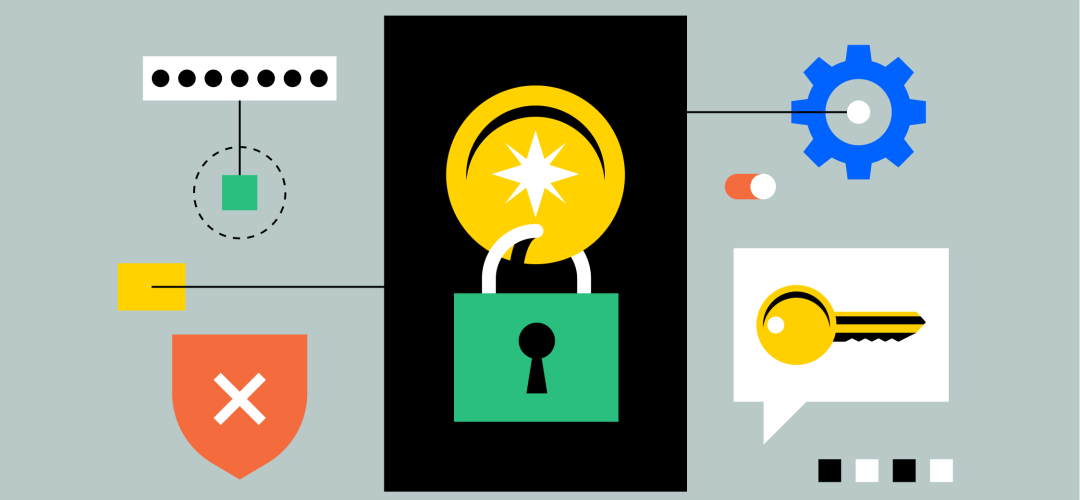The cryptocurrency space is an ever-evolving frontier, offering unprecedented opportunities for financial growth and technological innovation. However, with great opportunity comes great risk. The decentralized nature of crypto, which is its fundamental strength, also presents unique security challenges. Unlike traditional banking, there is often no central authority to reverse fraudulent transactions, meaning you are your own bank, and your security is solely your responsibility.
This comprehensive guide delves into the essential strategies and best practices required to build your digital fortress and effectively protect your valuable crypto assets from the relentless threat of scams, hacks, and human error.
1. The Bedrock of Security: Mastering Your Private Keys
The single most critical element of your cryptocurrency security is your private key—the cryptographic proof of ownership of your funds. Whoever controls the private key controls the crypto.
🔑 Private Key Management is Non-Negotiable
- Never Share: Treat your private keys and seed phrases (often 12 or 24 words) like the nuclear launch codes for your money. No legitimate exchange, wallet provider, or project team will ever ask for them. Anyone who asks is a scammer.
- Offline Storage: The best way to secure your seed phrase is to store it offline. Write it down on paper and keep it in multiple secure, undisclosed physical locations (e.g., a home safe, a bank deposit box).
- Avoid Digital Copies: Do not take photos of your seed phrase, store it on a cloud service (like Google Drive or Dropbox), or keep it in an unencrypted file on your computer. If your digital device is compromised, your funds are gone.
- Utilize Metal Storage Solutions: For enhanced protection against fire or water damage, consider using purpose-built steel plates or metal capsules to engrave or punch your seed phrase into.
2. Hardware vs. Software: Choosing the Right Wallet
The wallet you choose determines the level of protection for your private keys. Wallets are categorized as “hot” (connected to the internet) or “cold” (offline).
❄️ Cold Storage: The Gold Standard (Hardware Wallets)
A hardware wallet (like Ledger or Trezor) is an encrypted, physical device that stores your private keys completely offline.
- Transaction Isolation: When you want to send crypto, the transaction is signed inside the secure chip of the hardware wallet. The private key never leaves the device and is never exposed to your potentially compromised computer or phone.
- Mandatory PIN: Always set a strong PIN and be mindful of “shoulder surfing” when entering it.
- Purchase Directly: Buy hardware wallets only from the official manufacturer’s website. Never buy a used or pre-configured hardware wallet, as it could be tampered with.
🔥 Hot Storage: For Active Trading (Software/Mobile Wallets)
Software or mobile wallets (like MetaMask or Trust Wallet) are convenient but inherently less secure than hardware wallets because they are connected to the internet.
- Minimal Holdings: Only keep the amount of crypto you actively trade or use in hot wallets. The bulk of your funds should be in cold storage.
- Strong Passwords & Biometrics: Secure these wallets with unique, complex passwords and enable biometric authentication (fingerprint/Face ID).
3. Defense in Depth: Account and Device Security
Even the strongest wallet can be compromised if the devices and accounts interacting with it are weak links.
⚙️ Exchange and Account Security
- Two-Factor Authentication (2FA): This is non-negotiable for every crypto exchange and service you use. Crucially, avoid SMS-based 2FA. Use authenticator apps like Google Authenticator or Authy, or even better, a physical security key (like a YubiKey).
- Strong, Unique Passwords: Use a reputable password manager (like 1Password or LastPass) to generate and store complex passwords unique to every service. Never reuse passwords.
- Whitelist Addresses: On exchanges, enable the feature that allows withdrawals only to a pre-approved list of wallet addresses. This prevents a hacker who gains access to your account from quickly draining your funds to their own address.
💻 Device and Network Hygiene
- Dedicated Device: If possible, use a dedicated, clean device (a computer or phone) only for crypto transactions and sensitive operations.
- Software Updates: Keep your operating system, browser, and antivirus software updated. Updates often contain critical security patches against known exploits.
- VPN Use: When using public Wi-Fi, always connect through a Virtual Private Network (VPN) to encrypt your internet traffic and prevent snoopers from monitoring your activity.
4. The Human Element: Recognizing Scams
Most crypto losses result not from sophisticated hacks but from psychological manipulation—social engineering. Scammers are masters of deception.
🎣 Phishing and Impersonation
- Double-Check URLs: Always manually type or use a saved bookmark for exchange and wallet websites. Phishing sites often use URLs that look nearly identical to the real one (e.g.,
exchanqe.cominstead ofexchange.com). - Verify Senders: Scammers frequently impersonate customer support, project founders, or government agencies via email or social media. They will never ask you to “validate your wallet” by entering your seed phrase.
- Beware of DMs (Direct Messages): Unsolicited DMs on platforms like Discord, Telegram, or Twitter are almost universally scams. Legitimate support is usually conducted via official ticket systems.
📈 Investment Scams (The “Too Good to Be True” Rule)
- High-Yield/Guaranteed Returns: If an offer guarantees high, fixed returns (e.g., “double your BTC in 24 hours” or “cloud mining platforms”), it is a Ponzi scheme. Cryptocurrency returns are volatile and never guaranteed.
- “Rug Pulls”: Be extremely cautious with new, unaudited tokens, especially in Decentralized Finance (DeFi) or NFT projects. A “rug pull” is when the developers drain the liquidity pool after launching a token, making it worthless. Do your own research (DYOR).
5. Transaction Vigilance: The Last Checkpoint
Even when initiating a legitimate transaction, a moment of carelessness can lead to disaster.
🛑 The Address Check
- Triple-Check the Destination Address: Before hitting “send,” verify the receiving wallet address. Scammers employ “address poisoning”—sending you a dust transaction from an address that looks similar to one you frequently use, hoping you copy the wrong one.
- Perform a Test Transaction (For Large Sums): For any significant amount of crypto, send a minimal “test” amount first (e.g., $5 worth) to confirm it arrives at the destination correctly before sending the full balance.
Conclusion: Eternal Vigilance
Protecting your crypto assets is not a one-time task but a continuous discipline. The security landscape is always shifting, and scammers are constantly inventing new ways to trick unwary users.
By implementing cold storage for your primary holdings, enforcing strong 2FA, practicing uncompromising digital hygiene, and maintaining a healthy skepticism for unsolicited offers, you can significantly reduce your vulnerability. In the decentralized world of crypto, vigilance is the ultimate coin.






